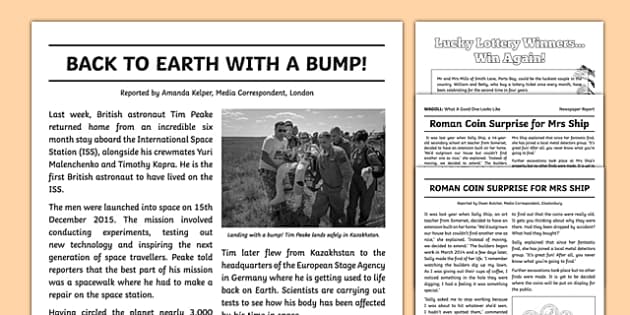Top Guidelines Of News Articles
Top Guidelines Of News Articles
Blog Article
3 Simple Techniques For News Articles
Table of ContentsIndicators on News Articles You Need To KnowThe smart Trick of News Articles That Nobody is Talking AboutThings about News ArticlesGetting My News Articles To WorkRumored Buzz on News Articles
Excellent knowledge of various subjects offers students an affordable edge over their peers. Although electronic and social media sites are easily obtainable, we must not forget exactly how important it is to check out the papers. Parents need to try and inculcate the behavior of reading a paper as a day-to-day routine to proceed the heritage of the revered print tool.News tales also consist of at the very least one of the complying with important attributes loved one to the intended audience: distance, prestige, timeliness, human interest, strangeness, or repercussion. The associated term journalese is occasionally used, typically pejoratively, to describe news-style writing. An additional is headlinese. Papers generally comply with an expository writing style.
Within these limitations, information tales additionally intend to be thorough. Various other elements are entailed, some stylistic and some obtained from the media type. Among the larger and a lot more recognized newspapers, fairness and equilibrium is a significant consider offering info. Discourse is typically constrained to a different area, though each paper may have a different general slant.
Papers with a worldwide audience, for instance, often tend to make use of a more official design of composing. The specific options made by a news electrical outlet's editor or content board are usually accumulated in a style overview; typical design guides include the and the United States News Style Book. The main objectives of information writing can be summed up by the ABCs of journalism: accuracy, brevity, and clarity.
Fascination About News Articles
As a regulation, reporters will certainly not use a lengthy word when a brief one will do. They make use of subject-verb-object building and construction and dazzling, energetic prose (see Grammar). They offer narratives, examples and allegories, and they rarely rely on generalizations or abstract ideas. Information authors try to avoid utilizing the very same word much more than once in a paragraph (sometimes called an "resemble" or "word mirror").
Headings sometimes omit the topic (e.g., "Jumps From Boat, Catches in Wheel") or verb (e.g., "Feline female fortunate"). A subhead (also subhed, sub-headline, subheading, subtitle, deck or dek) can be either a subservient title under the major headline, or the heading of a subsection of the article. It is a heading that precedes the primary message, or a group of paragraphs of the main message.

Extra billboards of any of these types may show up later in the write-up (especially on succeeding web pages) to tempt further reading. Such billboards are also used as tips to the article in other sections of the publication or website, or as promotions for the item in various other publication or websites. Regular structure with title, lead paragraph (recap in vibrant), various other paragraphs (information) and contact details.

Example of a hard-lead paragraph NASA is proposing an additional room task. The budget demands approximately $10 billion for the task.
An "off-lead" is the second most important front page news of the day. To "hide the lead" is to begin the article with background details or information of second importance to the visitors, compeling them to review even more deeply into a write-up than they need to have to in order to find the important factors.
Facts About News Articles Revealed
Usual usage is that a person or more Visit This Link sentences each develop their very own paragraph. Reporters normally define the organization or structure of a news tale as an upside down pyramid. The important and most fascinating components of a tale are placed at the beginning, with supporting information complying with in order of reducing relevance.
It allows people to explore a topic to just the depth that their curiosity takes them, and without the imposition of details or nuances that they might think about pointless, however still making that details readily available to extra interested readers. The inverted pyramid framework likewise allows short articles to be trimmed to any approximate length during format, to suit the area readily available.
Some authors begin their tales with the "1-2-3 lead", yet there are many kinds of lead available. This layout usually starts with a "5 Ws" opening paragraph (as described over), complied with by an indirect quote that serves to sustain a significant element of the very first paragraph, and afterwards a direct quote to support the indirect quote. [] A kicker can refer to multiple things: The last story current broadcast; a "pleased" story to end the program.
Longer posts, such as publication cover articles and the pieces that lead the inside areas of a newspaper, are recognized as. Function stories vary from straight information in a number of means.
Rumored Buzz on News Articles
The journalist frequently information interactions with meeting subjects, pop over to this web-site making the item more individual. A feature's initial paragraphs usually relate a fascinating moment or event, as in an "anecdotal lead". From the details of a person or episode, its sight quickly broadens to generalizations concerning the story's subject. The area that signals what a feature has to do with is called the or billboard.

The Editor's Toolbox: A Reference Guide for Beginners and Professionals (2001) Allan M. Siegal and William G. Connolly. The New York Times Guidebook of Style and Use: The Authorities Design Overview Made Use Of by the Writers and Editors of the World's Most Reliable Newspaper (2002) M. L. Stein, Susan Paterno, and R.
Report this page